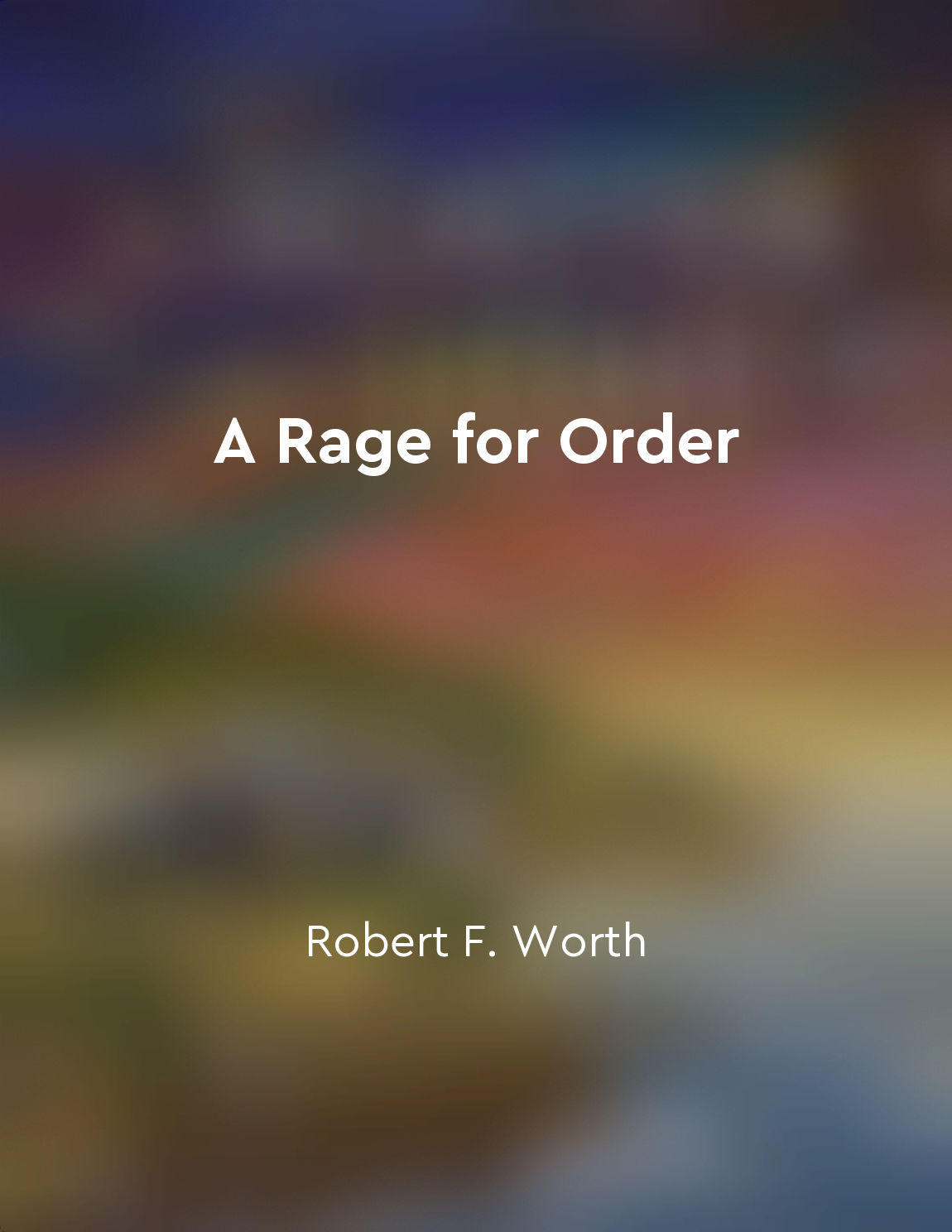Despots fell, leaving power vacuums from "summary" of A Rage for Order by Robert F. Worth
The downfall of despots in the Middle East ushered in a period of uncertainty and chaos. The power vacuums left in their wake created opportunities for various factions to vie for control. With the autocratic rulers gone, competing groups scrambled to fill the void and assert their authority. This power struggle often resulted in violence and instability, further exacerbating the region's woes. The sudden collapse of authoritarian regimes caught many by surprise, leaving a vacuum that no single group could easily fill. In the absence of a strong central authority, regional powers, militant groups, and grassroots movements all sought to advance their interests and shape the future of the region. This chaotic environment allowed for the emergence of new power dynamics and shifting alliances, as different actors jockeyed for position in the changing landscape. The power vacuums created by the downfall of despots led to a fragmentation of authority, with multiple actors claiming legitimacy and seeking to establish their rule. This lack of a unified leadership structure fueled conflicts and rivalries, as different factions clashed over competing visions for the future. The absence of a clear path forward further complicated efforts to stabilize the region and restore order. The struggle to fill the power vacuums left by toppled despots highlighted the complexities of governance and the challenges of building a new political order. The competing interests and divergent agendas of various groups made it difficult to achieve consensus and establish a coherent framework for governance. As a result, the region remained mired in uncertainty and turmoil, with no clear resolution in sight.Similar Posts
Transportation methods innovate
The future of transportation will be defined by innovation. From self-driving cars to flying taxis, the way we move from place ...
Begin by examining the origins of civilization
To truly understand the world as we know it today, one must first delve into the beginnings of civilization. It is through this...

